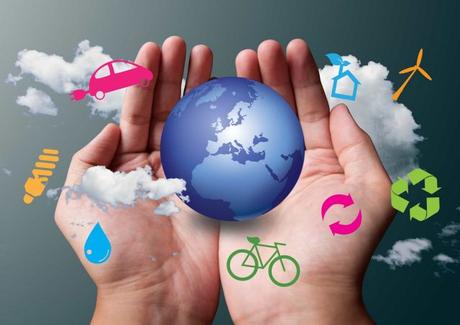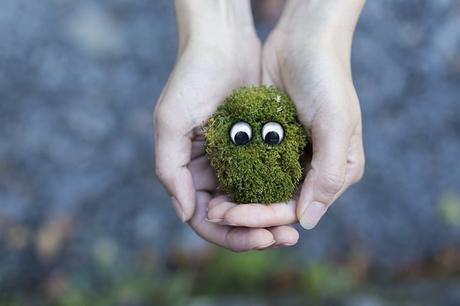What is an Ecosystem?
Ecosystem is defined as the earth’s vital units encompassing the entire system of living organisms (biotic) and the physical factors (abiotic or non-living things) that make up the environment. Otherwise stated, the interaction of a community of organisms with their physical environment constitutes the ecosystem. Therefore, the connectedness of the ecosystem brings about its categorization on the basis of functions and structure.
The functions pertain to activities associated with the key components in the ecosystem while structure is justified by the spatial distribution of the functions that are essential for the continued operation of the ecosystem. Ecosystem structure hence describes the physical features (abiotic) and organisms (biotic) of an environment including the distribution of nutrients and other prevailing climatic conditions, and the relationships between them. In the simplest definition possible, ecosystem structure is the network of interactions between components (biotic and abitoc) of the system.

Components of an Ecosystem
The ecosystem is largely divided into two functional components; the Abiotic and Biotic.
1. Abiotic
The abiotic component of the ecosystem refers to the physical environment or the non-living factors. Examples of the abiotic component comprise the soil, atmosphere, solar radiation and water. Abiotic factors greatly determine the functions, distribution, structure, behavior and inter-relationship of organisms in a habitat. Without the abiotic component, organisms cannot live or survive. Some of the most essential elements for food production and survival for both animals and plants like water and air are abiotic components. The abiotic component is further divided into two that is; the climatic factors and edaphic factors.
- Climatic factors: Climatic factors include elements namely rain, light, temperature, humidity, wind and air.
- Edaphic factors: These are elements such as minerals, soil, topography and pH just to mention a few.
2. Biotic
The biotic components of the ecosystems are the living organisms including animals, plants and micro-organisms (Fungi and Bacteria). The Biotic components are further categorized into three based on their functions in the ecosystem as producers, consumers, and reducers or decomposers.
- Producers: Producers, also known as autotrophs, are the green plants with chlorophyll which gives them the ability to use solar energy to manufacture their own food through a process termed as photosynthesis.
- Consumers: Consumers are on the second level. Since they lack chlorophyll, they depend on producers for food. Also known as heterotrophs, consumers are additionally grouped into primary consumers, secondary consumers, tertiary consumers, and quaternary consumers.
- Primary consumers: Also referred to as first order consumers or herbivores, the animal species under this category primarily feeds on plants or primary producers. Examples include zebras, goats, cattle, rabbits, grasshoppers, deer etc.
- Secondary consumers: species under this category are also known as second order consumers or primary carnivores. They mainly feed on herbivores and examples here are rats, foxes etc.
- Tertiary consumers: Tertiary consumers are the third order consumers (large carnivores) that feed on the secondary consumers. Examples are the wolves, owls, snakes.
- Quaternary consumers: These are the last order consumers and they are considered the largest carnivores. They feed on primary, secondary and tertiary consumers and are not eaten by any other animal. They are animals with little or without natural enemies. Examples are the tigers, cheaters, lions, hawks, polar bears, alligators, sharks etc.
- Reducers or Decomposers: Reducers also known as detrivores (such as worms, dung flies, vultures and crabs) are responsible for breaking down dead organic matter. Decomposers, also known as saprotrophs, are the fungi and bacteria which finish the process by further breaking down the dead remains of plants and animals into simple nutrients through decomposition/biodegradation. The nutrients (byproducts of the dead organic materials) are then used by producers resulting in cyclic exchange of materials in the ecosystem.
Examples of an Ecosystem
As defined earlier, ecosystems are interconnected and stable systems that provides for the beneficial relationship between the living and non-living things in the environment. An ecosystem is therefore a natural self-sufficient unit and is defined by the natural functions of both living and non-living things which encompasses examples such as lakes, ponds, deserts, forests, oceans, gardens and even our homes.
1. Lakes
Since the lake includes both biotic and abiotic things interconnected with physical and chemical interactions, it qualifies as an ecosystem. It is an example of a stationary ecosystem as the enabling environment is relatively still. Streams, rivers, ponds and oceans are similarly included under this category and is part of the aquatic ecology. The biotic components include fish, bacteria, phytoplanktons and zooplanktons while the abiotic factors include the water, light, and rocks underneath the lake.

2. Deserts
The desert is considered as an ecosystem because it has an ecology characterized by both biotic and abiotic functions and processes in arid areas. It includes both plant, animal, and bacterial populations and their interaction with desert climate, air and soil. In desert ecosystems, both plants and animals are specially adapted to withstand the harsh prevailing conditions.
Animals such as camels have evolved to store huge amounts of water in their bodies to enable it survive even without drinking water for several weeks. Plants such as cacti have their needle like shape leaves to reduce transpiration. Cacti also have very thick stems for storing water. Other various animals living in the desert including scorpions, desert snakes, and lizards equally have their special adaptation techniques for surviving the in the desert.
3. Forests
In the forest, there are many animal and plant species interacting with non-living things. For example, precipitation and sun’s energy is taken up by the plants and used for growth and then consumed by primary consumers (the herbivores). The primary consumers are later preyed on by secondary consumers particularly the carnivores and the system continue through simple and complex food web and food chain respectively.
In the end, the dead materials are decomposed by decomposers (bacteria and earthworms) where they are broken down into nutrients which are then again absorbed by the plant roots and the cycle starts afresh.
4. Ponds
A pond refers to a small lake or a pool of water. Just like the lake, it qualifies as an ecosystem because it contains both living and non-living things that depend on each other for survival. For instance, there are various living microorganisms in ponds that live in the ponds and are supported by the prevailing environmental condition of the pond.
Birds, insects, amphibians and reptiles also feed and live within the pond through simple and complex food web and food chains respectively. This makes the pond to qualify as an ecosystem.
5. Gardens
Gardens encourage natural processes and various functions in the local areas. They help in buffering the detrimental impacts of strong winds, regulating water drainage, and providing shelter and food for indigenous wildlife.
Soil microbes and wildlife species such as pollinator birds and insects, rodents, geckoes and frogs survive in urban areas and they are mostly dependent on the local gardens together with other non-living elements for survival. The local gardens are simply their central habitat.
6. Oceans
The oceans have diverse range of natural components that enable its continuity and the constant exchange of materials between living and non living things. Aquatic animals such as fish obtain essential nutrients such as phosphorous, nitrogen, oxygen and food from within the water. The same applies to the plants living under water. The ocean ecosystems, also known as marine ecosystems, are regarded as the most extensive of the planets ecosystems.
Accordingly, there are several other categories under ocean ecosystems including the mangroves, deep sea habitats, the sea floor, estuaries, coral reefs, and intertidal zones. Because of its extensiveness, ocean ecosystems often have a wide range of biodiversity. The ocean’s Coral reefs, for instance, provide places for shelter and food for thousands of marine fish and plants. Coral reefs also serve as breeding grounds for the aquatic species.
7. Grasslands
Grasslands are ecosystems in temperate regions that do not get so much rain as compared to other regions such as the tropical rainforests. The interconnectedness of the rich soils of the grasslands and the various animal and plant species depict it as a system formed by the constant interaction of living organisms with their physical environments. The grasslands supports animal species namely buffalo, wolves, lions, zebras, and antelopes and plants species such as wild oats, buffalo grass, foxtail, and needle grass.
8. Our homes and cities!
Our homes and cities are perfect examples of an ecosystem on the account that we as humans depend on very many non-living things and even one another to survive. Without the air in our atmosphere, we cannot breathe. Without the buildings, we cannot have shelter and without the raw materials sourced from earth, we wouldn’t be able to wear clothes, drive cars, get food or even function the way we do. In short, our homes and cities provide an excellent example of the ecosystem because we interact with other living and non-living things on a daily basis.

